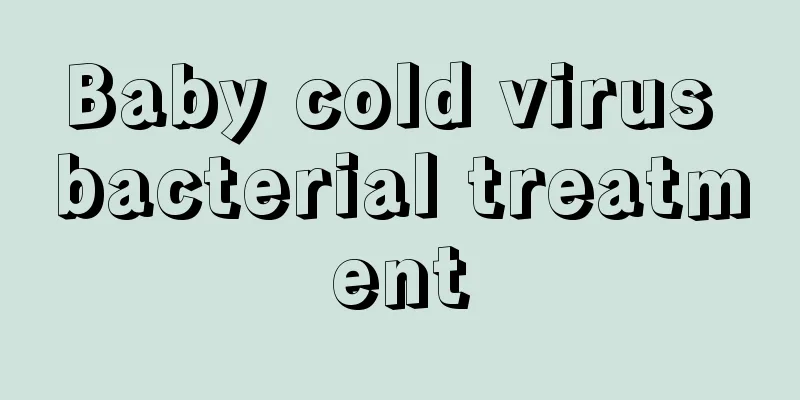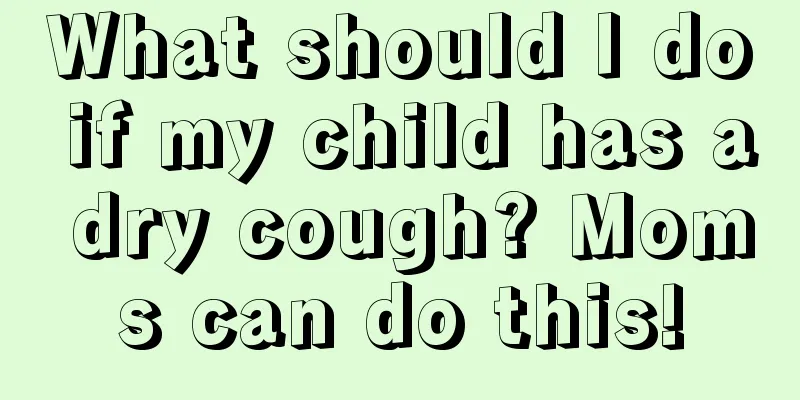Baby cold virus bacterial treatment

|
We all know that babies have small bodies, so their resistance is relatively poor. When they are young, mothers generally do not take their babies to crowded places, because crowded places have many people and naturally many bacteria, which can easily cause babies to be infected by bacteria. Most of the colds in babies are caused by bacterial infections. So how to treat viral and bacterial colds in babies? Bacterial colds are treated with antibiotics, and viral colds are treated with amantadine.More than 90% of colds are caused by various respiratory viruses, and only a very small number are caused by bacteria. Antibiotics are only effective against inflammation caused by bacteria and are useless against viral colds. For viral colds, irrational use of antibiotics is harmful rather than helpful to children. Children's physiological functions are not yet fully developed, and many antibiotics are metabolized through the liver. The abuse of antibiotics can easily cause liver damage. In addition, improper use of antibiotics can easily destroy the normal flora in children's bodies, because antibiotics kill many probiotics while killing pathogens. In this way, mild cases may cause diarrhea, constipation, and loss of appetite, and severe cases may lead to fungal infections, such as fungal enteritis, thrush, fungal dermatitis, etc. At the same time, repeated use of antibiotics will also produce drug resistance, and when there is a real bacterial infection, the use of antibiotics will be useless. Generally, children with a cold should drink more water, rest more, and take safe and effective antiviral cold medicines to recover quickly. Lianhua Qingwen Capsules are a new Chinese medicine that has entered the national drug review green channel and is both a cold and antiviral drug. It has unique triple effects: 1. Broad-spectrum antiviral; 2. Antipyretic and anti-inflammatory; 3. Regulating immune function. Lianhua Qingwen Capsules can quickly eliminate common symptoms of children's colds, such as fever, chills, nasal congestion, runny nose, cough, headache, etc., and treat colds safely and effectively. The main symptoms of viral colds in children are fever, which may or may not be present, high or low body temperature, clear runny nose, sneezing, coughing, good spirits, loss of appetite, sometimes accompanied by vomiting and diarrhea. A very small number of children may experience high fever convulsions. The main symptoms of bacterial colds in children are fever, especially persistent high fever, runny nose, sore throat, listlessness, poor appetite, and some children may experience high fever convulsions. Pediatric experts point out that simple and rapid peripheral blood tests (commonly known as blood tests) are of considerable value in distinguishing viral and bacterial upper respiratory tract infections, and can especially provide early diagnostic indicators for bacteremia. As we all know, the total number of white blood cells in normal children's blood is 4000-10000/cubic millimeter, of which classified neutrophils account for 55-60% and lymphocytes account for 35-40%. It has been observed that when children have a cold, a normal or slightly low total white blood cell count in their blood indicates a viral infection, which provides an objective basis for doctors to select antiviral drugs. If the total white blood cell count exceeds 12,000/cubic millimeter and the neutrophil count exceeds 70%, it often indicates bacterial upper respiratory tract infection or secondary bacterial infection, which provides the basis for doctors to choose antibiotics. Finally, it is worth mentioning that if a child has fever, cough or wheezing after becoming ill, and his respiratory rate is still accelerated when at rest (40-80 times per minute) or is accompanied by the three-depression sign (the suprasternal fossa, supraclavicular fossa and intercostal space are depressed during inhalation), generally a chest X-ray is not required to diagnose pneumonia.
The pathogens that cause colds include many viruses and bacteria, among which viral infections are the most common, accounting for more than 90%. Common cold viruses include rhinoviruses and coronaviruses, accounting for about 60%. Common bacterial infections include pneumococci and hemolytic streptococci. When your child catches a cold, how do you choose cold medicine? There are many types of medicines for treating colds. Not only do parents feel at a loss when choosing, but even medical staff are easily confused. For this purpose, the commonly used cold medicines in clinical practice are introduced as follows: 1. Xinbolin (ribavirin granules), an antiviral drug, the main ingredient of which is acyclovir, is suitable for viral upper respiratory tract infections. Specification: 50 mg/pack, produced by Sichuan Baili Pharmaceutical Company. 2. Hutong (Quick-acting Cold Remedy for Children): Mainly used for viral colds. Specification: 200 mg/pack, produced by Harbin Pharmaceutical Group Pharmaceutical Factory No. 6. 3. Compound Isatis Root Granules: an antiviral drug, its main function is to clear away heat and detoxify, and it is used to prevent and treat viral colds. Specification: 15g/bag. 4. Tylenol (pheniramine oral solution): a cold medicine designed specifically for children. Specification: 100 ml/bottle. Produced by Shanghai Johnson & Johnson Pharmaceutical Co., Ltd. |
<<: Does a 40-day-old baby need to stay in the ICU if he has inflammation?
>>: 3-year-old baby's blood test WBC high bacterial infection
Recommend
Air conditioning temperature in baby room in summer
Nowadays, every household is equipped with air co...
Is pulmonary edema serious in children?
Water accumulation in the lungs is usually pulmon...
What are the complementary food arrangements for five-month-old babies?
When taking care of a five-month-old baby, you mu...
What to do if your baby has indigestion before one month old
If a baby under one month old suffers from indige...
Is rice noodles good for children?
When the baby is about 5 months old, many mothers...
My baby farts a lot without pooping for a day
Many mothers will be particularly careful when fe...
Yellow runny nose after cold in children
The probability of colds occurring in our lives i...
White blisters on baby's gums
Some mothers found that there were many white bub...
What to do if your baby has a low-grade fever and cough
Now many parents report that their babies’ low-gr...
Nursing of intravenous indwelling needle in children
It is difficult for people to avoid getting sick ...
What to do if children have brain hypoxia
What to do with children's brain hypoxia is a...
Can children eat bananas when they have a cough?
Since children have relatively low immunity, they...
What to do if your child has a fever
Every child’s growth from childhood to adulthood ...
How old can babies get pneumonia vaccines?
Pneumonia is a serious disease that threatens the...
What are the dangers of eating MSG for children?
Children are very demanding about food because th...









